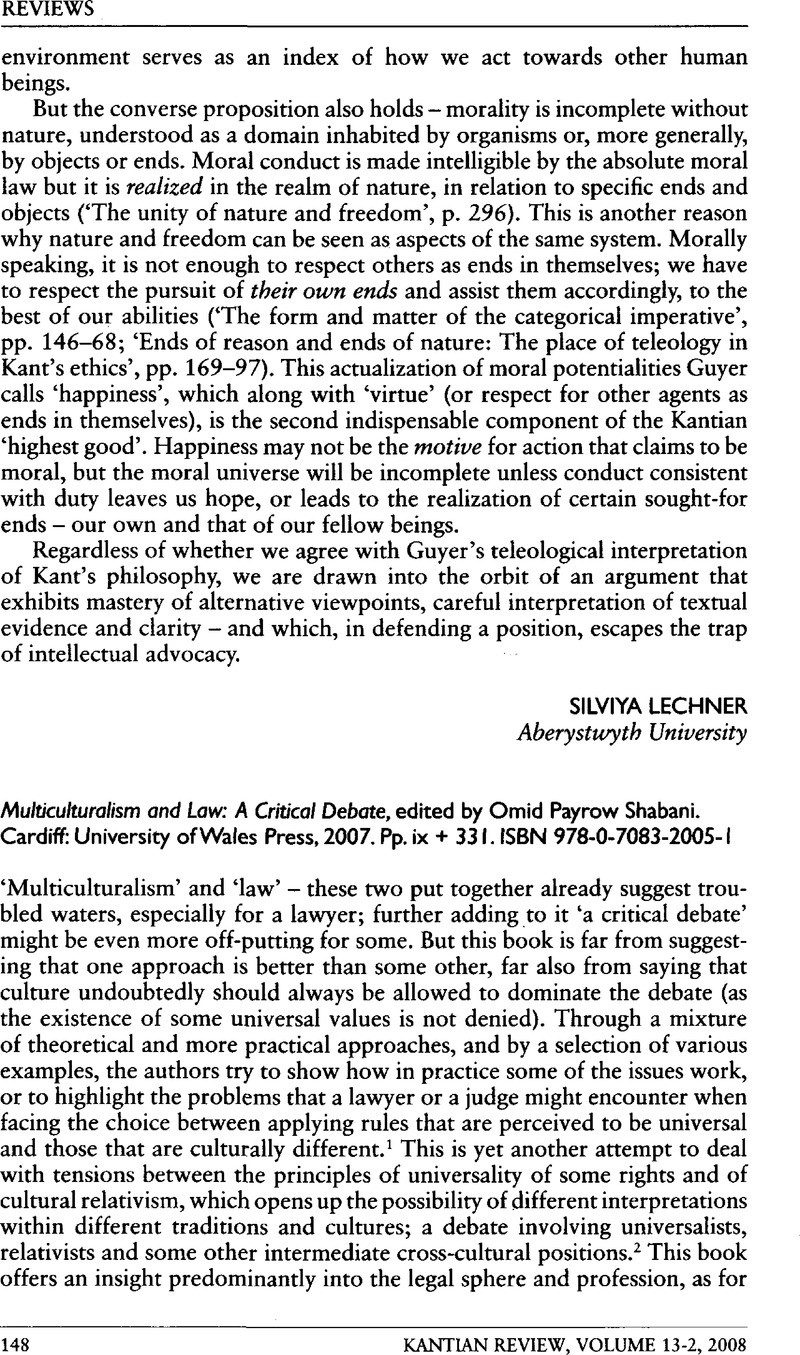No CrossRef data available.
Published online by Cambridge University Press: 25 March 2011

1 An interesting contribution in the legal sphere with regard to the ideas of ‘goodness’ and ‘badness’, as well as the concept of ‘justice’ within the social order, which are perceived to be related to culture and differentiated by it, is the Scandinavian Realism school. See especially Hägerström, A. (mentor of the Scandinavian group), Inquires in the Nature of Law and Morals, Stockholm: Almqvist, 1953Google Scholar.
2 There is a vast literature addressing the debate between universalism of law and principles on the one hand and cultural relativism on the other, especially in relation to human rights; see e.g. Renteln, Alison Dundes, ‘International human rights. Universalism versus relativism’, Frontiers of Anthropology, 6, pp. 61–87, 1990Google Scholar; Diane Ayton-Shenker, The Challenge of Human Rights and Cultural Diversity, United Nations Background Note, 6 July 2004; An-Naim, A. A. et al. (eds), Human Rights in Africa, Washington, DC: The Brookings Institution, 1990Google Scholar; Preis, Ann-Belinda S., ‘Human rights as cultural practice: An anthropological critique’, Human Rights Quarterly, 18, pp. 286–315, 1996.CrossRefGoogle Scholar
3 In chapter 4, ‘A judicial ethic for a pluralistic age’, p. 67.
4 For a significant study of the relationship between the work of a jurist and the rest of the society, see Korhonen, Outi, International Situated: An Analysis of the Lawyer's Stance towards Culture, History and Community, The Hague: Kluwer Law International, 2000Google Scholar.
5 As some argue, law is a creator of a specific culture and is a part of culture at the same time; further on the thesis that ‘law is integral to culture, and culture to law’, see e.g. Rosen, Lawrence, Law as Culture; An Invitation, Princeton, NJ: Princeton University Press, 2006CrossRefGoogle Scholar.
6 In chapter 12, ‘Rights to culture, autonomy and participation: The evolving basis of minority rights in Europe’, p. 235.
7 In chapter 13, ‘Democratic engagement with ethnic minority claims: A methodological intervention into a normative debate’, p. 263.
8 In chapter 1, ‘The practice of law-making and the problem of difference: An introduction to the field’, p. 19.
9 In chapter 10, ‘The Kantian project of the constitutionalization of international law: Does it still have a chance?’, p. 205.
10 For Kant ‘justice’ must not be only within and between states, but be available to all individuals on a global scale.